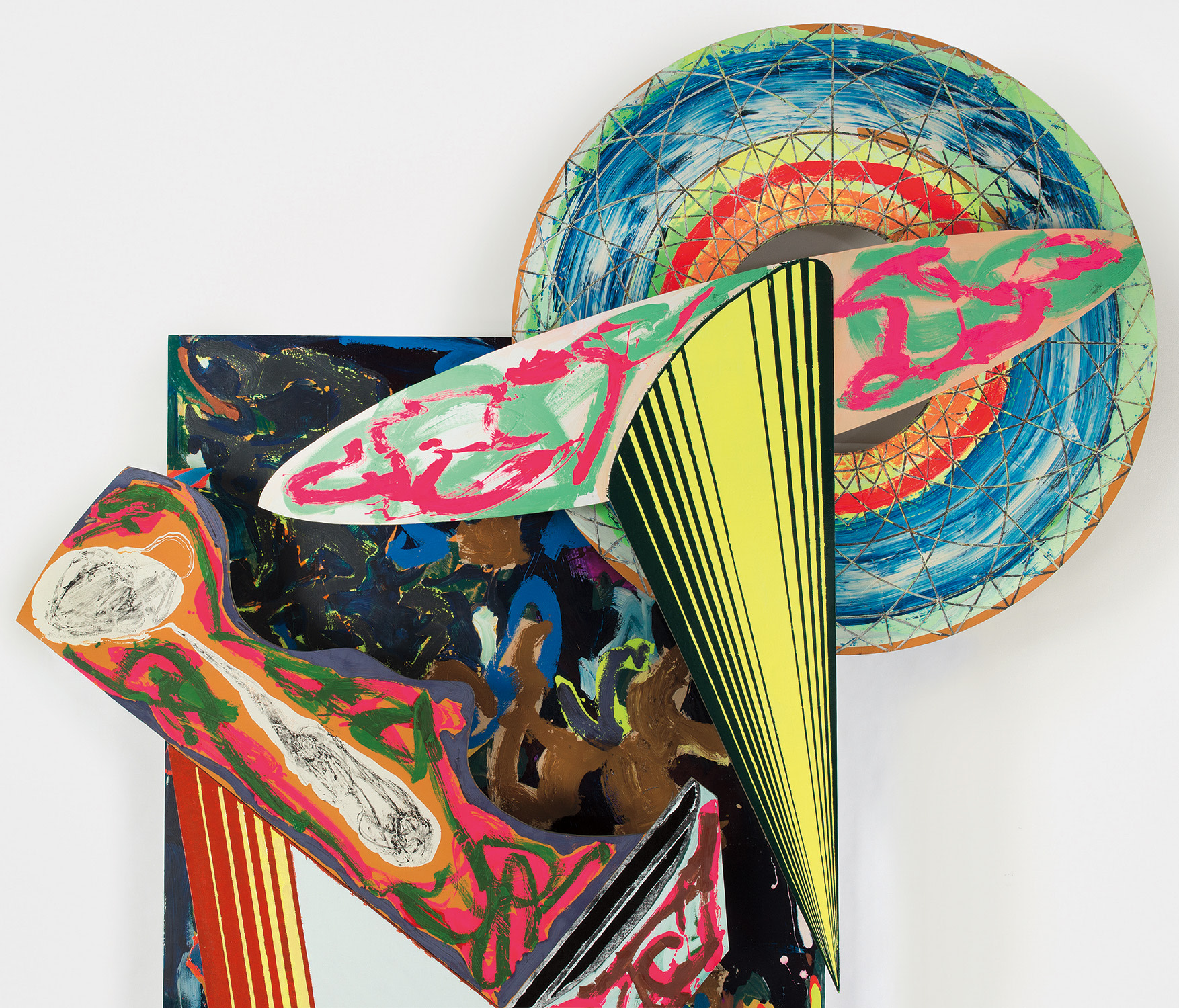





136
Frank Stella
Corpo-senza-l'anima (3.8x)
oil, urethane enamel, fluorescent alkyd, acrylic and printing ink on canvas, etched magnesium, aluminum and fiberglass, in 5 parts
overall 157 x 127 x 13 in. (398.8 x 322.6 x 33 cm)
Executed in 1985.
Further Details
Full-Cataloguing
Frank Stella
American | B. 1936 D. 2024Frank Stella is recognized as the most significant painter that transitioned from Abstract Expressionism to Minimalism. He believed that the painting should be the central object of interest rather than represenative of some subject outside of the work. Stella experimented with relief and created sculptural pieces with prominent properties of collage included. Rejecting the normalities of Minimalism, the artist transformed his style in a way that inspired those who had lost hope for the practice.